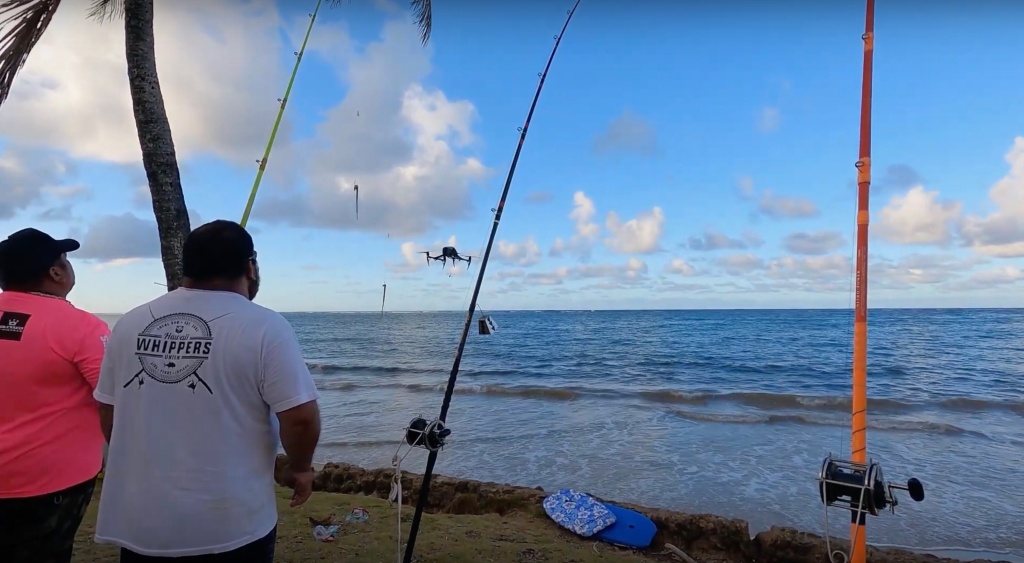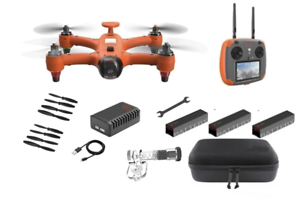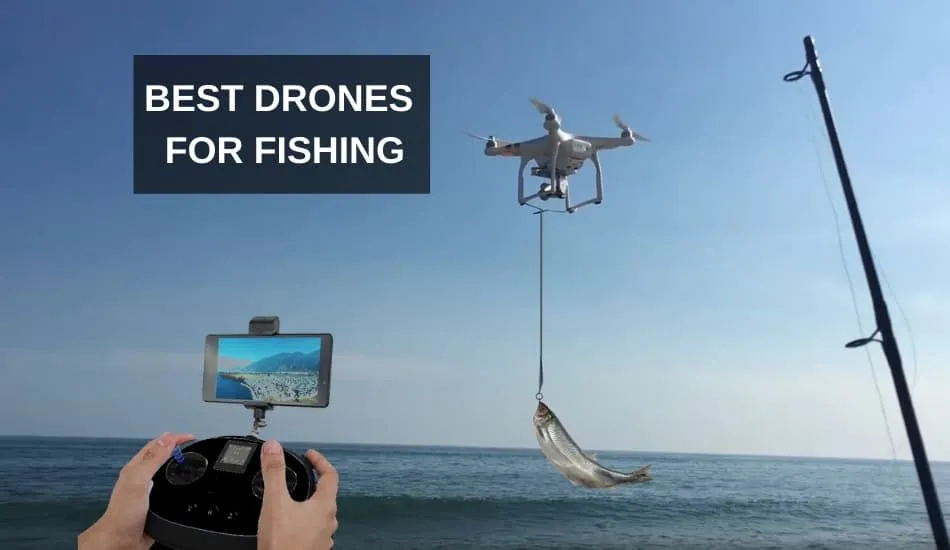
If you are a passionate fisherman, and you live in Australia you can use a drone for an aerial view of your property's waters. Drones come with various features like a mechanical payload release, an angle adjustable camera, GPS positioning system, and a GPS receiver. You can also buy fishing lines that you can use for fishing, which are designed to be extremely stable and secure. One example of such a drone is the SKY RIGGER.
The drone fishing line SKY RIGGER can be used for spotting fish.
The SKY RIGGER, a flexible fishing system for drones, allows you fish from the air using minimal effort. The system has two rotating leg clamps that can be mounted on a wide variety of drone models. The release mechanism includes a bayonet connector and a cam-lock arm, which allows you to quickly unlock the line clamps. Sky RIGGER is unlike other drones and can be used for all types of fishing.
The SKY RIGGER has an automatic release mechanism for when a fish strikes your fly. You can also manually release your line with your rod or hand. This feature is standard on all SKY RIGGER models. It is strongly recommended that you first purchase a Phantom 3 before you purchase the new SKY RIGGER. A few pros and cons of the new line system:
It features a mechanical payload release
A drone with a mechanical payload release system is one of the most important aspects. Many are designed to make it easy for anglers to remove their fishing line. Some models have no release mechanism. Instead, users must "yank the fishing line" to free the drone. This can be an inconvenient process, especially for people who aren't comfortable using their hands to release the line.

Its payload release function is another important feature. The payload should be able to release the drone's line when the fish is struck. Catch and release fishing is a skill that should be practiced before you attempt it. The DJI Phantom drone has been reported to have excellent results by many people. But, it is still not as advanced as other fishing drones.
It comes with a GPS location system
Rippton is an Australian-Dutch joint venture that specializes technology-oriented products for fishing. Its mission is to increase angler success rates through the development of products that enhance fishing experience. Rippton's Mobula drone features a GPS positioning system and a remote release. The Mobula is able to hold bait on the surface, resist kite clips and is environmentally friendly.
It weighs only 3 pounds and can fly for as long as 18 minutes. The high-tech GPS system allows it to be controlled up to 2,000 feet away. It is capable of flying at 1000 meters (or half a kilometer) range and has intelligent flight modes. Its point feature allows it high-quality images of the surrounding environment. You can see great images of fish thanks to its high-resolution digital camera.
It has a failsafe feature
The Aerokontiki fisherman drone comes with a failsafe feature: it monitors the battery level and releases the fishing line when needed. If the battery is dead, the drone will automatically return to dry ground and resume its mission. It operates with industrial-grade flightcontrollers, and it can work anywhere without requiring calibration. You can also use this drone in watery areas.

FAQ
Are Drones Banned Where?
The FAA bans drones flying in restricted areas such as airports, stadiums or sporting events, nuclear power stations, hospitals, prisons, and other sensitive areas. They allow them to fly at nights using GPS technology.
What is the law regarding drones flying over private property
Recently, the FAA released new rules for commercial drone operations. These rules only apply to UAVs less than 55 lbs and lower than 400 feet above the ground. Commercial operators must register with the FAA and obtain a license from the agency. Local authorities must also approve them if they are operating near airports or in other restricted areas.
Is it safe to drive while flying a drone?
Drone flying at high speed is dangerous. You also risk hitting pedestrians or other animals. You could also damage your car if you hit power lines, trees, or other buildings.
Statistics
- With the top 10% making over $100/h and the bottom 10% making as low as $10/h. (dronesgator.com)
- According to ZipRecruiter, the minimum hourly wage of drone pilots is $20. (thedroneu.com)
- According to Indeed, a drone pilot gets paid $25.73 per hour on average in the US. (dronesgator.com)
External Links
How To
How to Fly Drones with Beginners
A drone refers to a remote-controlled aircraft designed for aerial photography, surveillance and scientific research. Drone technology has existed since World War II. However, commercial use began in 2010 when DJI released their Phantom series of quadcopters. There have been many types of drones since then, including beginner-friendly drones like the Parrot AR Drone 2.0 and professional-grade multi-rotor crafts like the DJI Mavic Pro.
There are several ways to fly a drone, including;
-
Remote control – This is when you attach a device to your hand that allows you to control the drone's flight path. There are two main types, On/Off switches (like radios) and joysticks.
-
Manual Control – This allows remote operation of the drone via GPS coordinates using a smartphone application. You must keep track of the location where you want the drone to go and follow the instructions from the app.
-
Autonomous Flight: This means that the drone will take care of all the piloting. It is basically flying autonomously and without human intervention. A drone must have a builtin camera and sensors capable to capture images and other data.
-
Triggered Flight: This is similar in concept to manual control. The pilot manually creates a route and the drone then follows it until it reaches that endpoint. After the program is complete, the drone automatically returns to the ground.
-
Landing Gear – A few drones come with landing gear. This allows them land safely in the event of losing power or running out of battery.
-
Goggles – Pilots often wear goggles while flying to keep themselves safe from any debris.
-
Camera - Some drones can be equipped with cameras which enable you to capture photos from the sky.
-
Obstacles - Some drones can be equipped with obstacle avoidance systems that prevent them from crashing into obstacles.
-
Speed - Drones can reach speeds up to 40 mph.
-
Battery Life - Most drones are capable of lasting between 20 minutes and three hours, depending on the power that you use.
-
Some drones have a range of up to 30 miles, depending on their model.
-
Power source - Some drones need an external power source, while others use internal batteries.
-
Weight - Some drones weigh less than 1 pound, whereas other models weigh up to 4 pounds.
-
Size - From small drones that can be carried in the palm of one's hand to larger drones that weigh over 50 pounds, drones come in a variety of sizes.
-
Price - From high-end models that cost thousands of dollars to low-cost options that start at $100, all drones fall under a certain price category.